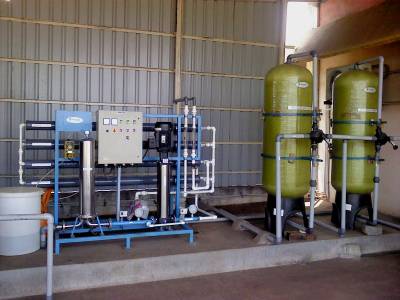Description
REVERSE OSMOSIS (RO) PLANT PROCESS: High-Purity Water Solutions
This detailed description outlines the comprehensive process involved in a Reverse Osmosis (RO) plant, highlighting its capabilities and benefits for various applications. Our RO plants deliver high-purity water by employing a robust, multi-stage purification process, ensuring consistent and reliable output.
1. Pre-Treatment:
Before the water even reaches the RO membranes, several pre-treatment stages are crucial for optimal performance and extended membrane life. These typically include:
- Screening: Removes large debris and prevents clogging of subsequent stages.
- Sediment Filtration: Removes suspended solids, silt, and rust particles, protecting the system from abrasive wear. Different micron ratings (e.g., 5, 10, or 20 microns) are selected depending on the source water quality.
- Activated Carbon Filtration: Reduces chlorine, chloramines, organic matter, and other dissolved substances that can foul the RO membranes. This improves the quality of the permeate and protects the membrane.
- Ultrafiltration (UF) (Optional): Removes even finer particles and colloidal matter, further enhancing the efficiency and lifespan of the RO membranes. This stage is often included for demanding applications or particularly challenging water sources.
- pH Adjustment (Optional): Adjusting the pH to an optimal range protects the membranes and enhances efficiency. This is particularly important for highly acidic or alkaline source waters.
2. Reverse Osmosis (RO) Stage:
This is the core of the process. High pressure is applied to force water through semi-permeable membranes, rejecting dissolved salts, minerals, and other impurities. Key aspects include:
- High-Pressure Pumps: Provide the necessary pressure to overcome osmotic pressure and drive water through the membranes. The required pressure depends on the feed water quality and desired level of purification.
- RO Membranes: The heart of the system, these specialized membranes selectively remove dissolved solids, significantly reducing total dissolved solids (TDS). Multiple membrane elements are typically used in series or parallel configurations for enhanced efficiency and capacity.
- Permeate (Product Water): The purified water that passes through the RO membranes. Its quality depends on the membrane's performance and the pre-treatment processes.
- Concentrate (Brine): The rejected water stream containing the concentrated impurities. This stream needs to be properly managed and disposed of according to environmental regulations.
3. Post-Treatment (Optional):
Further treatment may be necessary depending on the application requirements. This could include:
- UV Disinfection: Eliminates bacteria and viruses, ensuring microbiological safety.
- Ultraviolet (UV) Oxidation: Removes organic contaminants and improves taste and odor.
- Degasification: Reduces dissolved gases like CO2.
- Final Filtration: Polishes the water to remove any remaining particles.
4. Control and Monitoring System:
Modern RO plants incorporate advanced control and monitoring systems for efficient operation and optimal performance. These systems typically include:
- Automated Control Valves: Maintain consistent pressure and flow rates.
- Sensors and Meters: Monitor key parameters like pressure, flow rate, TDS, and pH.
- Data Logging: Records operational data for analysis and troubleshooting.
- Alarm Systems: Alerts operators to potential problems.
Applications:
RO plants find widespread application in various industries including:
- Industrial Processes: Providing high-purity water for manufacturing, cleaning, and other industrial applications.
- Pharmaceutical and Biotech: Meeting stringent purity requirements for pharmaceutical production and laboratory use.
- Power Generation: Producing high-quality water for steam generation and cooling systems.
- Food and Beverage: Providing pure water for food processing and beverage production.
- Municipal Water Treatment: Improving the quality of drinking water supplies.
This detailed description provides a comprehensive overview of the RO plant process. Specific system design and component selection depend on the application's unique requirements, source water quality, and desired product water specifications. Contact us to discuss your specific needs and receive a customized solution.
